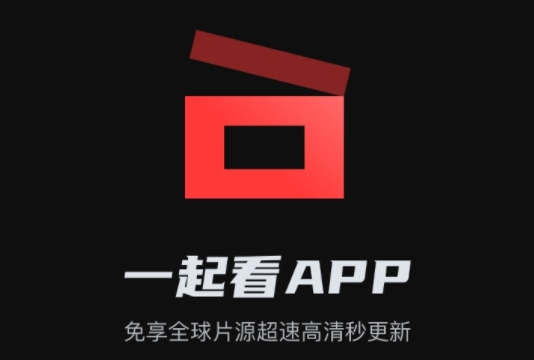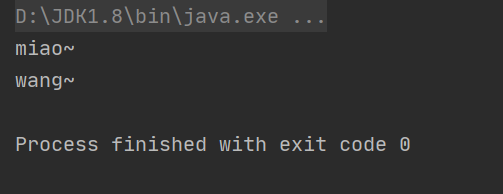最新下载
热门教程
- 1
- 2
- 3
- 4
- 5
- 6
- 7
- 8
- 9
- 10
Spring使用@Autowired注解实现自动装配方式代码示例
时间:2022-06-29 02:10:24 编辑:袖梨 来源:一聚教程网
本篇文章小编给大家分享一下Spring使用@Autowired注解实现自动装配方式代码示例,文章代码介绍的很详细,小编觉得挺不错的,现在分享给大家供大家参考,有需要的小伙伴们可以来看看。
Spring支持注解配置
引入注解依赖
启用注解
使用@Autowired注解实现自动装配
1、IOC容器配置
2、实体类使用@Autowired注解注入属性
package indi.stitch.pojo;
import org.springframework.beans.factory.annotation.Autowired;
public class People {
@Autowired
private Cat cat;
@Autowired
private Dog dog;
public Cat getCat() {
return cat;
}
public Dog getDog() {
return dog;
}
@Override
public String toString() {
return "People{" +
"cat=" + cat +
", dog=" + dog +
'}';
}
}
Cat实体类
package indi.stitch.pojo;
public class Cat {
public void shout() {
System.out.println("miao~");
}
}
Dog实体类
package indi.stitch.pojo;
public class Dog {
public void shout() {
System.out.println("wang~");
}
}
使用@Autowired注解支持自动注入后,可以省略实体类的setter方法
3、测试结果
使用Java类库中的@Resource注解可以实现相同的效果,@Autowired和@Resource注解的区别是
@Autowired注解默认按byType方式实现,@Resource注解默认按byName方式实现
@Autowired注解在IOC容器中配置了多个相同类型的bean时,需要配合@Qualifier找到唯一bean
@Autowired
@Qualifier("cat")
private Cat cat;
@Resource注解可以配置name和type属性进行bean的注入
@Resource(name = "dog", type = Dog.class) private Dog dog;
@Resource属性单独使用name属性后,将不会按照byType方式查找bean,@Autowired注解可以使用required属性来决定注入的属性是否允许为空
@Autowired(required = false)
@Qualifier("cat")
private Cat cat;
@Autowired注解的使用和注入规则
作为一个Spring开发者对@Autowired注解必定是非常了解了, 顾名思义自动装配,应该是Spring会自动将我们标记为@Autowired的元素装配好,与其猜测不如看看它的定义:
@Target({ElementType.CONSTRUCTOR, ElementType.METHOD, ElementType.PARAMETER, ElementType.FIELD, ElementType.ANNOTATION_TYPE})
@Retention(RetentionPolicy.RUNTIME)
@Documented
public @interface Autowired {
boolean required() default true;
}
很明显这个注解可以用到构造器,变量域,方法,注解类型和方法参数上。文档上这样描述:将一个构造器,变量域,setter方法,config方法标记为被Spring DI 工具自动装配。换句话说,在Spring创建bean的过程中,会为这个bean中标有@Autowired注解的构造器,变量域,方法和方法参数中自动注入我们需要的已经在Spring IOC容器里面的bean,,而无需我们手动完成,并且注入的bean都是单实例,也就是在两个bean中都依赖第三个bean,那么这两个bean中注入的第三个bean会是同一个bean(JVM中指向的地址相同)。
在@Autowired注解里面有一个required属性,该属性默认为true,当为true时,表示去Spring IOC中查找相应的bean,如果找不到,则会报错,如果为false时,表示去Spring IOC中查找相应的bean,如果找不到,则直接忽略,不再进行注入。
@Autowired注解的注入规则:默认按照类型进行注入,如果IOC容器中存在两个及以上的相同类型的bean时,根据bean的名称进行注入,如果没有指定名称的bean,则会报错。
可以使用@Qualifier("wheel")来使用指定id的bean,也可以在注入bean时,添加@Primary注解,优先添加一个bean,其规则如下:
如果指定添加了@Qualifier("wheel")则按照指定的bean id进行添加(优先级最高),找不到则直接报错。如果没有添加@Qualifier而添加了@Primary注解,则首先添加标注了@Primary注解的bean。当即存在@Qualifier注解也存在@Primary注解注解,则按照@Qualifier指定的bean id注入,找不到直接报错。
很多人java开发者都知道@Autowired注解,但是真正用的好的也不多(反正系统的学习Spring之前我是不知道的),那下面让我们来看一下@Autowired的用法:
1.使用在变量域上面
这个相信大家都已经清楚了,Spring会帮我们注入我们想要的bean,看下面的例子:
package it.cast.circularDependency;
@Component
public class Wheel {
}
@Component
public class Car {
@Autowired
private Wheel wheel2;
public Wheel getWheel() {
return wheel2;
}
public void setWheel(Wheel wheel2) {
this.wheel2 = wheel2;
}
}
@ComponentScan({"it.cast.circularDependency"})
public class AutowiredConfig {
}
下面进行测试,打印的结果显示可以拿到Wheel类,说明@Autowired注解在IOC容器中只有一个类型的bean时,按照类型进行注入。
@Test
public void AutowiredConfigTest(){
AnnotationConfigApplicationContext context =
new AnnotationConfigApplicationContext(AutowiredConfig.class);
Car bean = context.getBean(Car.class);
System.out.println(bean.getWheel());
}
//打印结果:
// it.cast.circularDependency.Wheel@3eb25e1a
下面看一下当IOC容器中有两个Wheel类型的bean时的情况,改造Wheel类,增加一个属性标识用于记录向Car类中注入的哪个Wheel的bean,在AutowiredConfig配置类中添加一个bean,bean的名称默认为方法名,也就是wheel1。
@Component
public class Wheel {
private int num = 2; //通过包扫描的方式注入的bean的num值为2
public int getNum() {
return num;
}
public void setNum(int num) {
this.num = num;
}
}
@Component
public class Car {
@Autowired
private Wheel wheel3;//将变量名改成wheel3,IOC容器中Wheel类型的bean的名称只有wheel和wheel1
public Wheel getWheel() {
return wheel3;
}
public void setWheel(Wheel wheel3) {
this.wheel3 = wheel3;
}
}
@Configuration
@ComponentScan({"it.cast.circularDependency"})
public class AutowiredConfig {
@Bean
public Wheel wheel1(){
Wheel wheel = new Wheel();//通过配置类注入bean的方式num值为0
wheel.setNum(0);
return wheel;
}
}
这时在Spring IOC中有两个Wheel类型的bean了,Car在注入Wheel类型的bean时,会根据变量名wheel3去找,也就是说会去找类型为Wheel,名称为wheel3的bean,显然是找不到的,也就会报错。
Exception encountered during context initialization - cancelling refresh attempt:
org.springframework.beans.factory.UnsatisfiedDependencyException:
Error creating bean with name 'car':
Unsatisfied dependency expressed through field 'wheel3';
nested exception is org.springframework.beans.factory.NoUniqueBeanDefinitionException:
No qualifying bean of type 'it.cast.circularDependency.Wheel' available:
expected single matching bean but found 2: wheel,wheel1
org.springframework.beans.factory.UnsatisfiedDependencyException:
Error creating bean with name 'car': Unsatisfied dependency expressed through field 'wheel3';
nested exception is org.springframework.beans.factory.NoUniqueBeanDefinitionException:
No qualifying bean of type 'it.cast.circularDependency.Wheel' available:
expected single matching bean but found 2: wheel,wheel1
上面为报错的日志打印,大致意思说的在创建名称为car的bean时,不能为变量域wheel3完成属性注入,因为找到了两个bean,分别是wheel和wheel1。
如果我们把Car中的wheel3换成wheel就可以完成注入了,而且注入的bean是通过包扫描注入IOC的bean:
@Component
public class Wheel {
private int num = 2; //通过包扫描的方式注入的bean的num值为2
public int getNum() {
return num;
}
public void setNum(int num) {
this.num = num;
}
}
@Component
public class Car {
@Autowired
private Wheel wheel;//将变量名改成wheel1,IOC容器中Wheel类型的bean的名称只有wheel和wheel1
public Wheel getWheel() {
return wheel;
}
public void setWheel(Wheel wheel3) {
this.wheel = wheel;
}
}
@Configuration
@ComponentScan({"it.cast.circularDependency"})
public class AutowiredConfig {
@Bean
public Wheel wheel1(){
Wheel wheel = new Wheel();//通过配置类注入bean的方式num值为0
wheel.setNum(0);
return wheel;
}
}
在测试类中打印num值看看注入的是哪个bean:
@Test
public void AutowiredConfigTest(){
AnnotationConfigApplicationContext context =
new AnnotationConfigApplicationContext(AutowiredConfig.class);
Car bean = context.getBean(Car.class);
System.out.println(bean.getWheel().getNum());
}
//打印结果:
// 2
那么就验证了上面所说的注入规则:默认按照类型进行注入,如果IOC容器中存在两个及以上的相同类型的bean时,根据bean的名称进行注入,如果没有指定名称的bean,则会报错。
@Autowired注解使用在变量域中还可以解决循环依赖的问题,循环依赖问题就是A对象中注入了B对象,B对象中注入了A对象,循环依赖在面试Spring这一块的知识应该经常会被问题,关于循环依赖的问题,在后面的博客中会更新。
2.@Autowired注解使用在构造器上面
@Autowired使用在构造器上面有几条需要特别注意的点:
1.@Autowired标注在构造器上面不能解决循环依赖构造的问题
2.@Autowired可以标注在同一个类的多个构造器上面,但是required属性必须都为false,当required有一个为true时,不允许其他构造器标有@Autowired注解,即使required属性为false也不行。
@Component
public class A {
private B b;
private C c;
@Autowired
public A(B b, C c) {
System.out.println("b=" + b + ", c=" + c);
this.b = b;
this.c = c;
}
}
@Component
public class B {
}
@Component
public class C {
}
//打印结果:
// b=it.cast.circularDependency.B@68e965f5, c=it.cast.circularDependency.C@6f27a732
@Autowired标注在构造器上面,在B创建的过程中,会去Spring IOC中拿到需要的注入的bean,完成B的创建,其实在只有一个构造器的情况中,@Autowired可以不加,因为Spring内部有自动推断构造器的能力,这个如果想了解自动推断构造器的同学可以自行百度(实在是太难了,一脸蒙蔽)。
下面看一个构造器循坏依赖的案例:
@Component
public class C {
private B b;
public C(B b) {
this.b = b;
}
}
@Component
public class B {
private C c;
public B(C c) {
this.c = c;
}
}
Spring目前不能解决构造器的循环依赖,所以在项目中使用的时候要格外注意一下,错误日志:
org.springframework.beans.factory.UnsatisfiedDependencyException:
Error creating bean with name 'a' defined in file
[E:IdeaProjectsjavaBasisspringtargetclassesitcastcircularDependencyA.class]:
Unsatisfied dependency expressed through constructor parameter 0;
nested exception is org.springframework.beans.factory.UnsatisfiedDependencyException:
Error creating bean with name 'b' defined in file
[E:IdeaProjectsjavaBasisspringtargetclassesitcastcircularDependencyB.class]:
Unsatisfied dependency expressed through constructor parameter 0;
nested exception is org.springframework.beans.factory.UnsatisfiedDependencyException:
Error creating bean with name 'c' defined in file
[E:IdeaProjectsjavaBasisspringtargetclassesitcastcircularDependencyC.class]:
Unsatisfied dependency expressed through constructor parameter 0;
nested exception is org.springframework.beans.factory.BeanCurrentlyInCreationException:
Error creating bean with name 'b':
Requested bean is currently in creation: Is there an unresolvable circular reference?
下面看一下关于多个@Autowired标注的构造器的案例:
@Component
public class A {
private B b;
private C c;
@Autowired(required = false)
public A(B b) {
this.b = b;
}
@Autowired
public A(B b, C c) {
System.out.println("b=" + b + ", c=" + c);
this.b = b;
this.c = c;
}
}
@Component
public class B {
}
@Component
public class C {
}
上面已经说到,如果@Autowired注解的属性required为true时,不允许再出现其他构造器上面标有@Autowired注解(@Autowired注解的required默认为true,所以上面的会报错),错误日志为:
org.springframework.beans.factory.BeanCreationException:
Error creating bean with name 'a': Invalid autowire-marked constructors:
[public it.cast.circularDependency.A(it.cast.circularDependency.B)].
Found constructor with 'required' Autowired annotation:
public it.cast.circularDependency.A(it.cast.circularDependency.B,it.cast.circularDependency.C)
使用下面的写法就不会出现错误了,Spring支持多个构造器有@Autowired注解,但是required属性必须都是false
@Component
public class A {
private B b;
private C c;
@Autowired(required = false)
public A(B b) {
this.b = b;
}
@Autowired(required = false)
public A(B b, C c) {
System.out.println("b=" + b + ", c=" + c);
this.b = b;
this.c = c;
}
}
@Component
public class B {
}
@Component
public class C {
}
关于@Autowired标注在方法上就不多介绍,会首先拿到方法的参数列表,然后根据上面所说的注入规则去Spring IOC中找相应的bean。
相关文章
- 污污漫画入口风险警示-合规访问指南与安全指引 12-13
- 海棠文学城网页版官网入口-2025在线网址直达 12-13
- 土豪漫画官方APP免费下载入口-正版无广告畅读保障 12-13
- 歪歪漫画app最新版下载入口-首页畅读无广告直接进 12-13
- SkrBT磁力官网最新入口-skrbt磁力引擎极速版入口 12-13
- 微博热搜网页版极速入口-微博热搜榜官方直达链接 12-13















